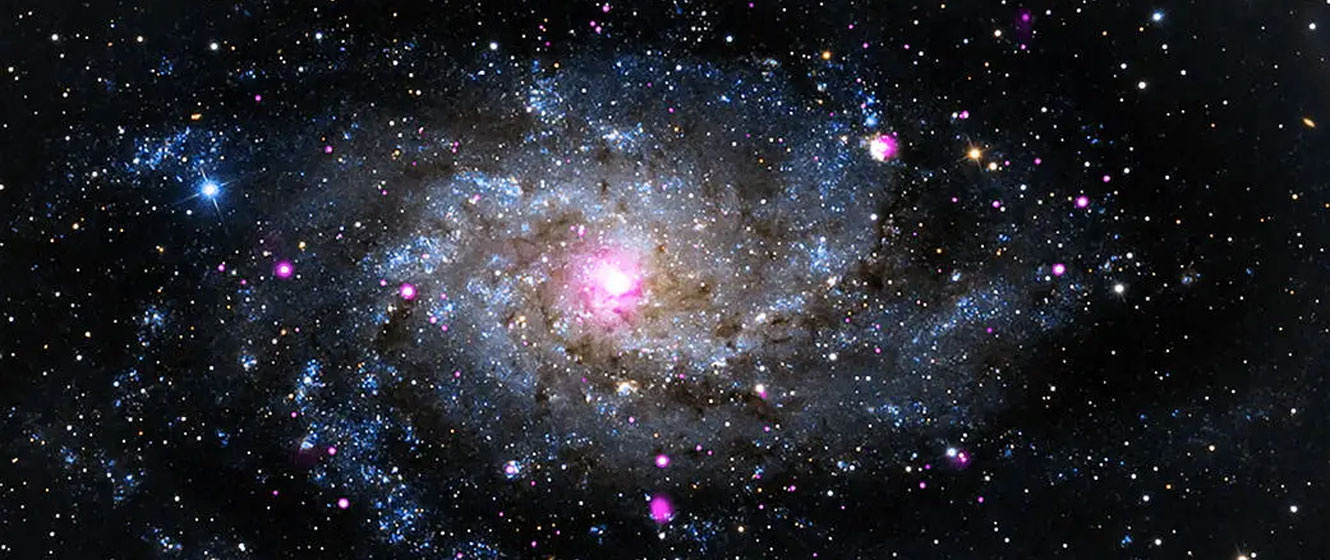
In this episode of What's in the Sky this Month, Teagan reviews some of the beautiful celestial objects you can see in the month of November 2023!
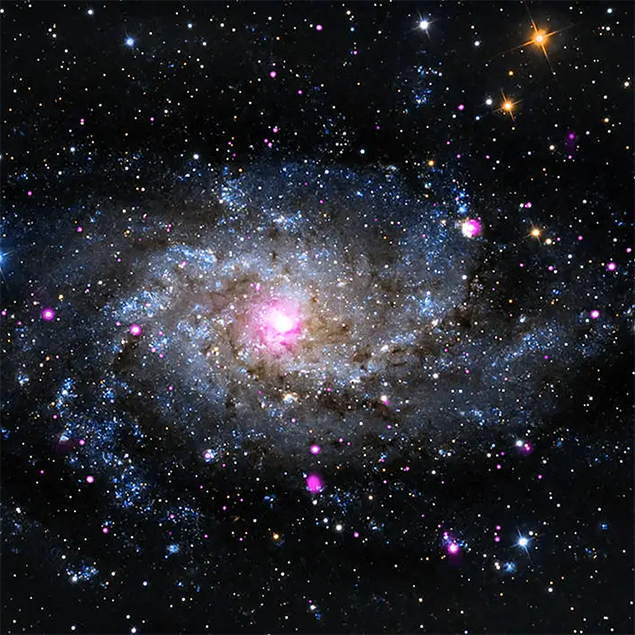
Image credit: X-ray: NASA/CXC/SAO/P. Plucinsky et al.
The Triangulum Galaxy
- Type: Galaxy
- Constellation: Triangulum
- Distance: 2.8 million light-years
- Magnitude: 5.8
- Apparent Diameter: 62’ x 37’
Unlike the Milky Way’s other large neighbor, the Andromeda Galaxy, the Triangulum Galaxy can be a little tricky to spot. That’s because its light is scattered over a fairly large area, making it appear fainter than its listed magnitude implies. That said, under excellent conditions, you can theoretically spot the Triangulum Galaxy with just your eyes, but otherwise you’ll most likely need binoculars.
It’ll appear within the same field of view as Metallah (Alpha Trianguli) as a large but faint oval patch of light, with larger binoculars showing a bright core. The core appears oval through small scopes, with a large but faint halo surrounding it. Larger scopes and averted vision will hint at spiral arms with some mottling and the possibility of dark lanes being visible.
OUR NEAREST NEIGHBORS
Mars is in conjunction with the Sun on the 18th and won’t be visible, but Mercury can be seen in the evening sky during the second half of the month. A day-old Moon hangs very low over the southwestern horizon 15 minutes after sunset on the 14th, with Mercury about five degrees to its right. Saturn remains visible in the evening sky and will be high over the southern horizon by nightfall, with a first quarter Moon to the left of the planet on the 20th. Neptune is also visible; it’s moving in a retrograde motion through Pisces and crosses into Aquarius on the 29th. Both Jupiter and Uranus reach opposition, with Jupiter being the first on the 3rd and Uranus following suit on the 13th. Both are in Aries, with Jupiter shining at a brilliant magnitude -2.9 and Uranus faintly glowing at magnitude 5.6. Venus remains alone in the predawn twilight, but be sure to rise early on the 9th, as a slender crescent Moon - complete with Earthshine - will be roughly a degree east of the planet in the twilight. The Moon itself turns new on the 13th and then full on the 27th.
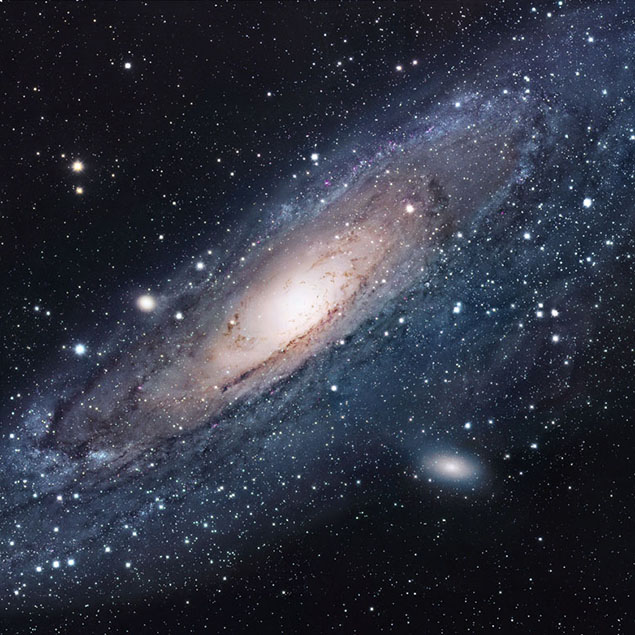
Image credit: Robert Gendler
Messier 31 - The Andromeda Galaxy
The Andromeda Galaxy can be glimpsed with the naked eye under dark skies and appears as a faint, grey, elongated patch through even low-powered binoculars. Small scopes will show a little more detail, including the two satellite galaxies, M32 and M110, while averted vision can show the dark dust lane that’s so readily apparent in photographs.
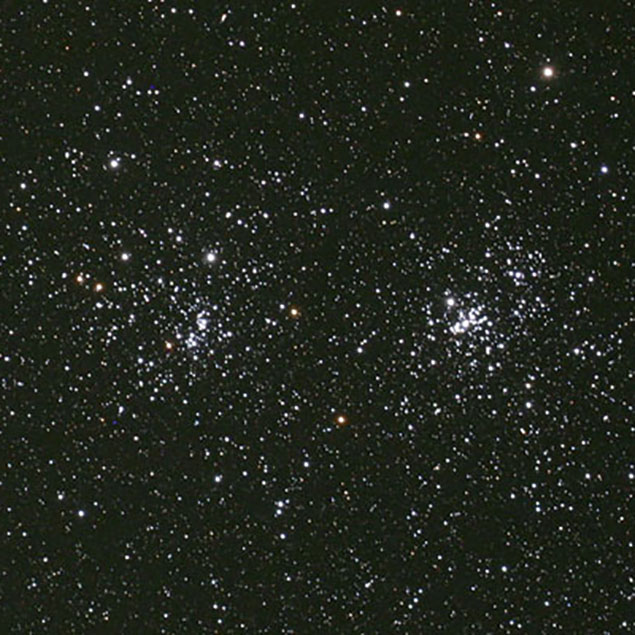
Image credit: Andrew Cooper
NGC 869/884 - The Double Cluster
Faintly visible to the naked eye under dark skies, the Double Cluster is an easy target for binoculars. Telescopically, both clusters fit nicely into the same low magnification field of view, with NGC 869 appearing smaller and denser. NGC 884 appears about twice as large as its neighbor, with sparsely scattered blue-white stars of uniform brightness.
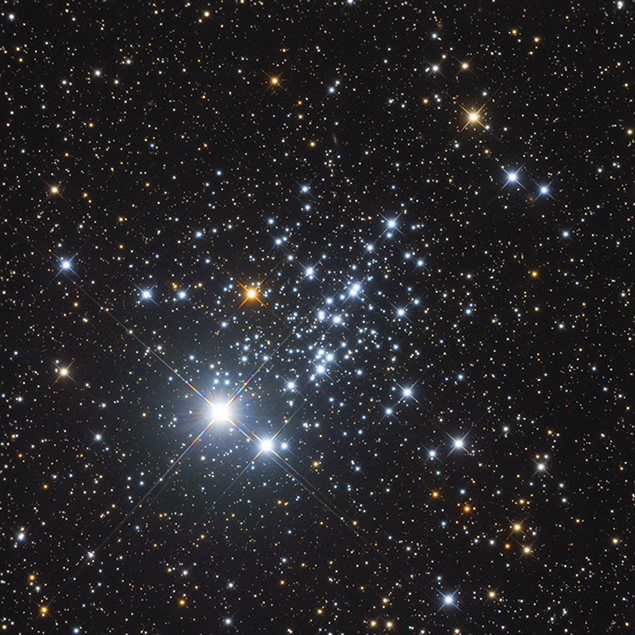
Image credit: Leonardo Orazi
NGC 457 - The Owl Cluster
The Owl Cluster, or E.T. Cluster, can be detected with binoculars but is best seen with a telescope. A low magnification of around 30x will show Phi Cassiopeiae, the double star that marks the owl’s eyes. The rest of the stars outline its body and outstretched wings, with the densest portion of the cluster appearing in the owl’s chest area.
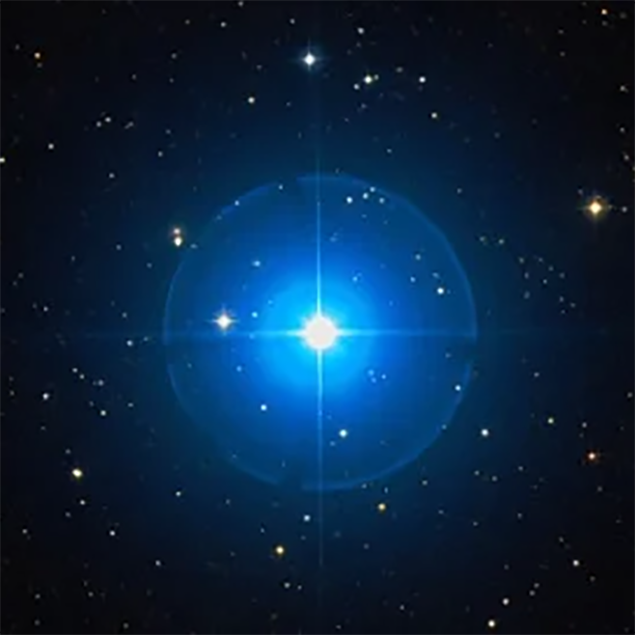
Image credit: Wikisky
Gamma Arietis - Mesarthim
Here’s a relatively easy double star for almost any telescope. It’s a clean split at around 50x, with two equally bright white components being seen through even the most modest scopes. The best views come at around 100x, with the stars nicely separated from one another and appearing against a starry background.
STELLAR CONCEPTS
Opposition: A planet, asteroid, or dwarf planet is said to be at opposition when it’s directly opposite the Sun in the sky. As a result, like the full Moon, it rises at sunset, sets at sunrise, and is therefore visible throughout the night. It’s also when the object is brightest and appears largest when observed telescopically, as the distance between the Earth and the object is at its smallest for the year.










